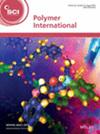求助PDF
{"title":"通过混合设计方法增强蛋壳衍生羟基磷灰石/聚氨酯压电复合材料的机械能量收集性能:先进介电材料的一条有前途的途径","authors":"Tanzeel Munawar, Nadia Akram, Khalid Mahmood Zia, Muhammad Saeed","doi":"10.1002/pi.6761","DOIUrl":null,"url":null,"abstract":"<p>Piezocomposites provide lightweight, flexible and scalable technologies for efficiently converting mechanical energy into electrical energy. For sustainable energy production, we examined a low-cost, biobased alternative to convert mechanical energy into piezoelectric energy. Hydroxyapatite (HA) having a particle size of 53.26 nm made from chicken eggshell waste was combined with polyurethane (PU) to produce piezoelectric composites. <i>In situ</i> polymerization was performed using aliphatic isocyanates, isophorone diisocyanate, poly(propylene glycol) and 1,4-butanediol. The piezoelectric properties of six different composite films with varying HA concentrations (0–25%) were optimized using a statistical mixture design approach. Fourier transform infrared spectroscopy, thermogravimetric analysis, X-ray diffraction analysis, dynamic mechanical analysis and scanning electron microscopy were utilized for physicochemical characterization. As the HA concentration was increased, the mechanical properties were enhanced, as a uniform dispersion of HA was observed within the PU matrix. An oscilloscope displayed an output voltage of 17.46 V at 16 Hz, with 3 N force applied to a 25% HA composite film. The dielectric constant, dielectric loss and resistivity are frequency functions, and impedance analysis showed low-frequency values with high dielectric properties. The present study has indicated that PU/HA biocomposites are cost-effective and lightweight and can be used in piezoelectric devices in biomedical and wearable electronics. © 2025 Society of Chemical Industry.</p>","PeriodicalId":20404,"journal":{"name":"Polymer International","volume":"74 8","pages":"710-726"},"PeriodicalIF":3.6000,"publicationDate":"2025-04-02","publicationTypes":"Journal Article","fieldsOfStudy":null,"isOpenAccess":false,"openAccessPdf":"","citationCount":"0","resultStr":"{\"title\":\"Enhanced mechanical energy-harvesting performance of eggshell-derived hydroxyapatite/polyurethane piezocomposites through mixture design approach: a promising route for advanced dielectric materials\",\"authors\":\"Tanzeel Munawar, Nadia Akram, Khalid Mahmood Zia, Muhammad Saeed\",\"doi\":\"10.1002/pi.6761\",\"DOIUrl\":null,\"url\":null,\"abstract\":\"<p>Piezocomposites provide lightweight, flexible and scalable technologies for efficiently converting mechanical energy into electrical energy. For sustainable energy production, we examined a low-cost, biobased alternative to convert mechanical energy into piezoelectric energy. Hydroxyapatite (HA) having a particle size of 53.26 nm made from chicken eggshell waste was combined with polyurethane (PU) to produce piezoelectric composites. <i>In situ</i> polymerization was performed using aliphatic isocyanates, isophorone diisocyanate, poly(propylene glycol) and 1,4-butanediol. The piezoelectric properties of six different composite films with varying HA concentrations (0–25%) were optimized using a statistical mixture design approach. Fourier transform infrared spectroscopy, thermogravimetric analysis, X-ray diffraction analysis, dynamic mechanical analysis and scanning electron microscopy were utilized for physicochemical characterization. As the HA concentration was increased, the mechanical properties were enhanced, as a uniform dispersion of HA was observed within the PU matrix. An oscilloscope displayed an output voltage of 17.46 V at 16 Hz, with 3 N force applied to a 25% HA composite film. The dielectric constant, dielectric loss and resistivity are frequency functions, and impedance analysis showed low-frequency values with high dielectric properties. The present study has indicated that PU/HA biocomposites are cost-effective and lightweight and can be used in piezoelectric devices in biomedical and wearable electronics. © 2025 Society of Chemical Industry.</p>\",\"PeriodicalId\":20404,\"journal\":{\"name\":\"Polymer International\",\"volume\":\"74 8\",\"pages\":\"710-726\"},\"PeriodicalIF\":3.6000,\"publicationDate\":\"2025-04-02\",\"publicationTypes\":\"Journal Article\",\"fieldsOfStudy\":null,\"isOpenAccess\":false,\"openAccessPdf\":\"\",\"citationCount\":\"0\",\"resultStr\":null,\"platform\":\"Semanticscholar\",\"paperid\":null,\"PeriodicalName\":\"Polymer International\",\"FirstCategoryId\":\"92\",\"ListUrlMain\":\"https://scijournals.onlinelibrary.wiley.com/doi/10.1002/pi.6761\",\"RegionNum\":4,\"RegionCategory\":\"化学\",\"ArticlePicture\":[],\"TitleCN\":null,\"AbstractTextCN\":null,\"PMCID\":null,\"EPubDate\":\"\",\"PubModel\":\"\",\"JCR\":\"Q2\",\"JCRName\":\"POLYMER SCIENCE\",\"Score\":null,\"Total\":0}","platform":"Semanticscholar","paperid":null,"PeriodicalName":"Polymer International","FirstCategoryId":"92","ListUrlMain":"https://scijournals.onlinelibrary.wiley.com/doi/10.1002/pi.6761","RegionNum":4,"RegionCategory":"化学","ArticlePicture":[],"TitleCN":null,"AbstractTextCN":null,"PMCID":null,"EPubDate":"","PubModel":"","JCR":"Q2","JCRName":"POLYMER SCIENCE","Score":null,"Total":0}
引用次数: 0
引用
批量引用





 求助内容:
求助内容: 应助结果提醒方式:
应助结果提醒方式:


